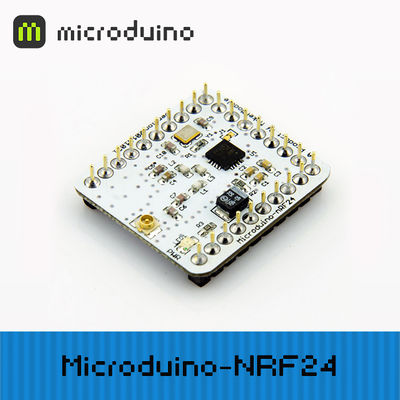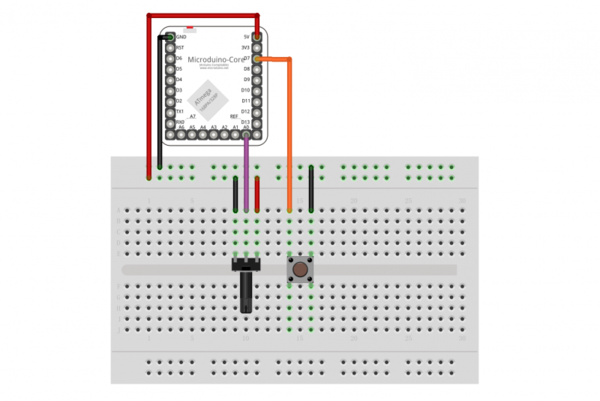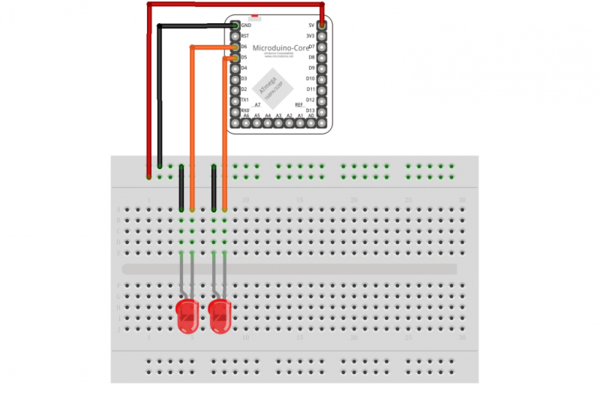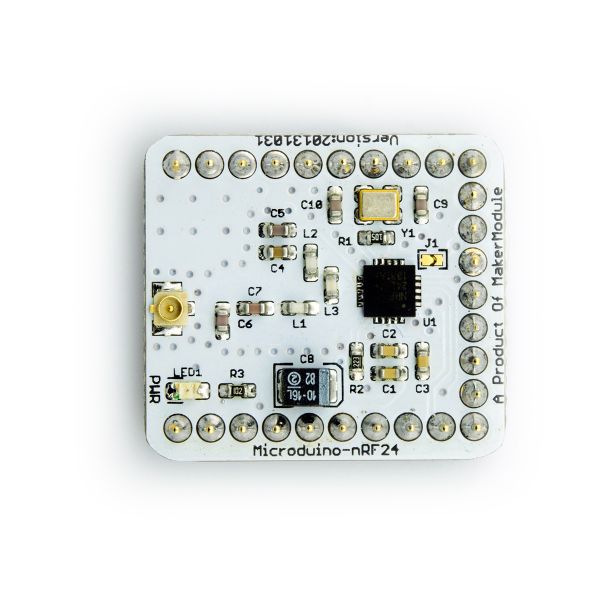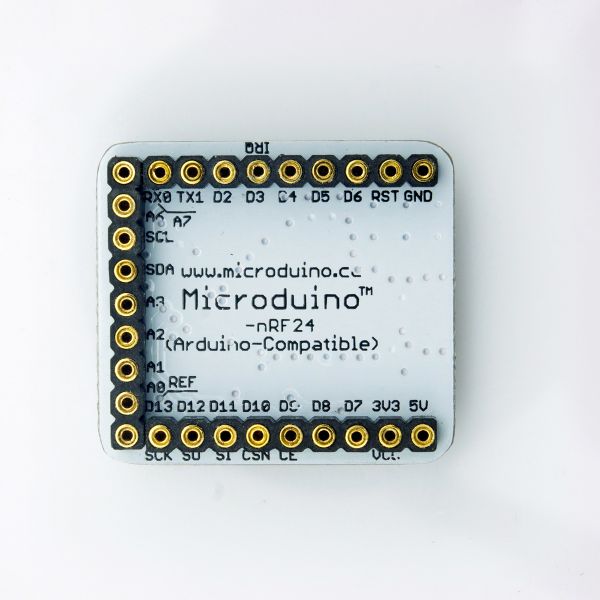“Microduino-nRF24”的版本间的差异
(→Main Components) |
(→Features) |
||
| (未显示2个用户的4个中间版本) | |||
| 第17行: | 第17行: | ||
==Features== | ==Features== | ||
*Low apply cost, the link layer is fully integrated in the module, very easy to develop; | *Low apply cost, the link layer is fully integrated in the module, very easy to develop; | ||
| − | *Automatic retransmission function, automatic detection and resend the lost packets. Retransmission time and retransmission times can be | + | *Automatic retransmission function, automatic detection and resend the lost packets. Retransmission time and retransmission times can be controlled by software; |
*Automatic store the packets that didn't received response signal; | *Automatic store the packets that didn't received response signal; | ||
*Automatic reply function, after receipt of a valid data, module will send response signal automatically, no need programming again; | *Automatic reply function, after receipt of a valid data, module will send response signal automatically, no need programming again; | ||
*Set six receiving channel address at the same time and selectively open the receiver channel; | *Set six receiving channel address at the same time and selectively open the receiver channel; | ||
*Standard pin 2.54 MM spacing interface, convenient for embedded application; | *Standard pin 2.54 MM spacing interface, convenient for embedded application; | ||
| − | *Small, cheap, stackable | + | *Small, cheap, stackable and open; |
*Open source hardware circuit design, compatible with the Arduino IDE development environment for programming; | *Open source hardware circuit design, compatible with the Arduino IDE development environment for programming; | ||
| − | * | + | *Define unified interface Microduino specification and contain rich peripheral modules. Set up the quick connection with other Microduino modules and sensors easily and flexibly. |
*2.54 pitch row female connector for easy integration into breadboard. | *2.54 pitch row female connector for easy integration into breadboard. | ||
| − | |||
==Specification== | ==Specification== | ||
| 第63行: | 第62行: | ||
* Chip:'''[[File:NRF24L01 datasheet.pdf]]''' | * Chip:'''[[File:NRF24L01 datasheet.pdf]]''' | ||
* crystal:'''[[File:HCX-3SB-16M.pdf]]''' | * crystal:'''[[File:HCX-3SB-16M.pdf]]''' | ||
| − | |||
==Development== | ==Development== | ||
===Arduino library and support package=== | ===Arduino library and support package=== | ||
*Use RF24 library, refer to RF24 library file and RF24Network library file: | *Use RF24 library, refer to RF24 library file and RF24Network library file: | ||
| − | ** | + | **https://github.com/Microduino/Microduino_Tutorials/tree/master/Microduino_Libraries/_03_Microduino_nRF_RF24 |
| − | ** | + | **https://github.com/Microduino/Microduino_Tutorials/tree/master/Microduino_Libraries/_03_Microduino_nRF_RF24Network |
| − | |||
==Application== | ==Application== | ||
| 第92行: | 第89行: | ||
**Sending end can control receiving end's LED by button. | **Sending end can control receiving end's LED by button. | ||
**Sending end potentiometer can control the lightness of LED for receiving end. | **Sending end potentiometer can control the lightness of LED for receiving end. | ||
| + | |||
| + | ==FQA== | ||
| + | *Does this module have the antenna? | ||
| + | **Yes. | ||
| + | *How does the Auto Acknowledge & Auto Re-Transmit work? Finished by software or hardware? | ||
| + | **Automatic retransmission function, automatic detection and resend the lost packets. Retransmission time and retransmission times can be controlled by software; | ||
| + | **Automatic store the packets that didn't received response signal; | ||
| + | **Automatic reply function, after receipt of a valid data, module will send response signal automatically, no need programming again; | ||
| + | *Does this module support the voltage convert from 5V to 3.3V? | ||
| + | **Core and Core+ module doesn’t support this voltage conversion and it can be finished by stacking BM, FT232, DUO and UNO module. | ||
| + | *How to control this module running in low power consumption mode or close it directly? | ||
| + | **You use the function pwerDwon() that Arduino library provided. | ||
| + | *What's the work range of this module? | ||
| + | **100 meters in open area. | ||
==Bug== | ==Bug== | ||
| 第100行: | 第111行: | ||
==Picture== | ==Picture== | ||
| − | [[ | + | [[file:Microduino-nRF24-t.jpg|thumb|600px|center|Microduino nRF24 Front]] |
| − | [[ | + | |
| + | [[file:Microduino-nRF24-b.jpg|thumb|600px|center|Microduino nRF24 Back]] | ||
==Video== | ==Video== | ||
|} | |} | ||
2014年8月22日 (五) 02:48的最新版本
| Language | English |
|---|
|
Microduino-nRF24 uses the newest 2.4GHz transceiver nRF24L01 from Nordic Semiconductor. This transceiver IC operates in the 2.4GHz band and has many new features! Take all the coolness of the nRF2401A and add some extra pipelines, buffers, and an auto-retransmit feature. Designers can use Microduino-nRF24 in project without any wireless design , and just need to stack it with Microduino-Core or Microduino-Core+ through UPin-27, the standard Microduino interface will attach nRF24 and MCU with SPI bus, on transferring data. Microduino-nRF24 works in the 1.9 to 3.6v voltage, the on-chip DC-DC regulator will automatically step down supply voltage to proper level. Note: We now populate these boards with the nRF24L01+. The '+' version of the IC has improved range, sensitivity, and data rates. The command set is backward compatible with the original nRF24L01.
| ||||||||||||||||||
目录Features
Specification
Pin Description
DocumentEagle PCB 文件:Microduino-nRF24.zip
Main Components
DevelopmentArduino library and support package
ApplicationDownload ProgramTest Program:文件:Program Test NRF.zip Two Microduino core communicate via Nrf24
FQA
BugHistoryPictureVideo |
